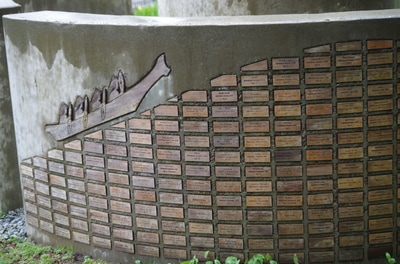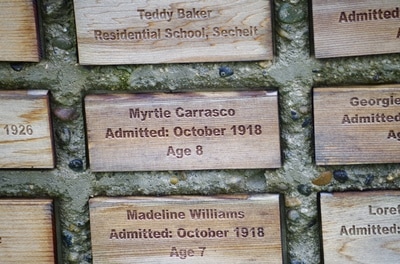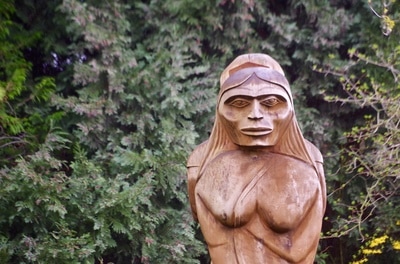 In December of 2015 the Truth and Reconciliation Commission released its final report. The Commission had been working since 2008 with the goal of acknowledging and promoting awareness of the Indian Residential School (IRS) legacy. Specifically, the commission was to create a report: … concerning the IRS system and experience including: the history, purpose, operation and supervision of the IRS system, the effect and consequences of IRS (including systemic harms, intergenerational consequences and the impact on human dignity) and the ongoing legacy of the residential schools I’ve had the distinct privilege over the last 20 years to work closely with and learn from First Nations people from across the country and have been witness to youth and elders rediscovering a culture that was all but stripped from them. I could easily see the scars left by the IRS system but I don’t think that most Canadians have this opportunity to begin to understand this stain on our cultural history. The commission, I think, did a great job of bringing awareness and understanding to the forefront and popular pieces of artistic work such as Gord Downie’s Secret Path or the graphic and assumption busting work of Kent Monkman are evidence that we, as a nation, are becoming aware and coming to grips with our past. Here on the Burrard Inlet we were in the thick of the IRS system. St. Paul’s Indian Residential School operated from 1899-1958 in North Vancouver. The school was located in what was then known as Ustlawn (Eslhá7an), which later became the Mission Indian Reserve No. 1 that it is today. Students of the school either came from this reserve or surrounding Squamish, Tsleil-Waututh, and Musqueam communitites, and in some cases from even further abroad. Tucked away just off the reserve is a monument to the survivors of St. Paul’s school. It was unveiled in June of 2014 and is a simple, yet stark, homage to those whose lives were impacted by the operation of the school. There are two figures, a man and a woman, standing back to back atop a column surrounded by small plaques with the names of former students. As I stood in the light rain taking pictures and viewing the installation I was moved by the resilience of Canada’s indigenous people. Many of the names on the small plaques had their age. Often only age 6 or 7. So, for almost 60 years (2-3 generations) young students were brought to the school in their most formative years and forced to shed their existing culture for a new one. Most communities would surely have been utterly destroyed in the face of such deliberate cultural genocide and yet here we are today with the final report of the Truth and Reconciliation commission making cultural and political waves all on the road to strengthening and honouring the culture of the people of this land. For further reading check out these links:
1 Comment
 So I went out last night for my first ever stand up paddleboard (SUP) race. As it turns out, I was grossly underprepared and grossly over confident at the same time. First, my board. I use a beautiful Boardworks Great Bear SUP that is designed for loading up gear and heading out on a day trip or expedition. It can handle big waves and chop really well. It is the off road pick up truck of the SUP world... not the indy car. Strike 1. Second, my clothing and gear. The racers around me were using super light pull cord inflatable waist belts that satisfy the requirement for a personal floatation device without being too bulky or constrictive and think neoprene suits that didn't let them get easily overheated. I was in an expedition style life jacket complete with tow belt, knife, and pockets for emergency equipment and a full gore-tex drysuit complete with latex neck and wrist gaskets. I was the most comfortable guy on the starting line... strike 2! Finally, I've paddled for the last number of years through big waves and long distances and even surf on a SUP so I thought I had this little 4km course all but wrapped up. I didn't think I was going to win, mind you, but I didn't really think it was going to be much of a work out either. As such I didn't really fuel up with good food or water and wasn't really in a strong competitive mindset. Strike 3. The race starts and I'm off with the pack! So fun! The course left the Deep Cove government docks and headed out due East (see map). Things were going pretty well there and once I rounded the buoy to head South and pick up a tail wind things were feeling quite good. Most of the pack was out in front of me but, "no problem", I thought to myself. I knew they'd be a little quicker - especially off the start. I was hitting my top speed (in green) of 10.5 km/h and having a great time. About 1.5 km into the 4 km race, however, hauling my big heavy board with my bulky too warm clothing and personal flotation device proved much harder than I had anticipated. I was getting pretty hot and starting to slow my pace a little. Things really started to fall apart as I rounded Grey Rocks island. You see the little red dot in my route around the West side of the island? It was here that my fin hit a submerged rock and stopped my board dead in its tracks. The result, of course, was to throw me over the front of my board and into the water. I quickly clambered back onto my board and got underway again only to come around the East side of the island directly into a powerful and gathering headwind. According to the Canadian weather service, by that time, I was attempting to paddle directly into a sustained North East Gale of 26 knots gusting to 36 (see weather recap below). I didn't know that at the time... all I knew is that I was barely moving and paddling as hard as I could. According to my route tracing app I was paddling about 0.39 km/h at that point! Now this is where the Inlet taught me something. When I headed out on the water at 6:30 to warm up there was very little wind - 5 knots maybe. But there were these weird waves coming out of the North that should have suggested changing seas to me. I was so engrossed with my own actions that I didn't stop to listen to what the water and the inlet were trying to tell me. That is why this project is important. We, as people who live on the inlet should attempt to find ways to bring ourselves more in tune with our surroundings, more aware of the changes that are happening. The life lessons from the inlet? 1. Look and listen to what's happening around you. Try to notice small changes and what they might mean for the immediate future. 2. Be prepared with the right stuff or be prepared to suffer the consequences. So much fun out there. Despite being across from multiple industrial sites and being in an area that sees commercial crabbing operations I was still able to find lots of crabs out there. I was just off of Cates Park in North Vancouver and couldn't help but think how productive the land and sea must have been for the Tsleil-Waututh (The People of the Inlet) before European explorers. What an amazing place we live in! #burrardinletproject #tsleilwaututh |
Archives
June 2017
Categories |

















 RSS Feed
RSS Feed
